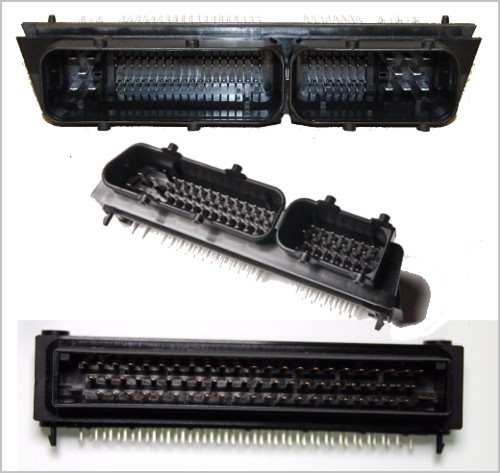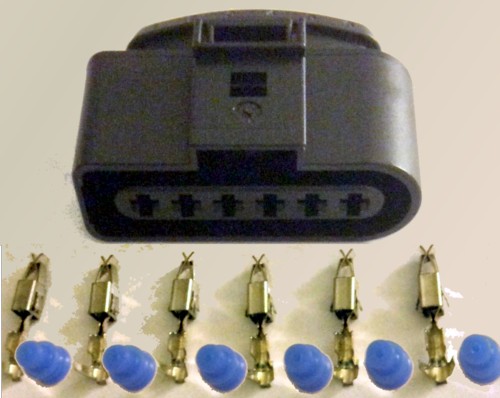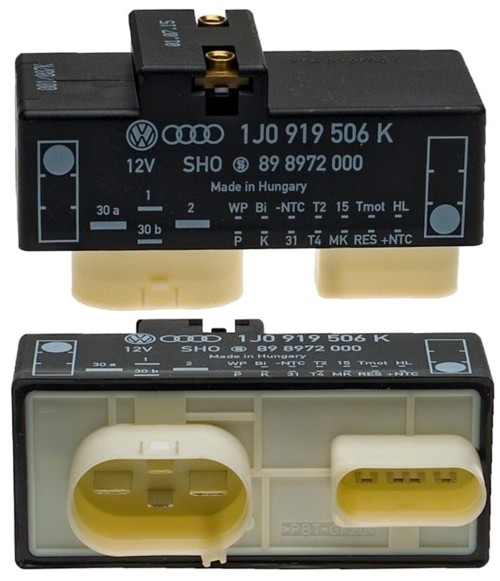RANSOMWARE
VW POLO HIGHLINE
Do you know what Ransomware is? Well, for those who don't know, it is a type of computer malware that encrypts your computer documents, photos, databases, files and other general computer data, then demands payment (ransome) to obtain the decryption key. Computer hijackers and hackers normally spread Ransomware, attached to an emails that once executed, opens a security hole in your computer system for them to exploit. The latest ransomware makes use of your computer's RDP (Remote Desktop Protocol) port to gain access to computers holding sensitive information. The RDP port is aka as port 3389. However ransomware is not limited to laptops, notebooks and desktop computers, virtually every device that are connected to an IoT (Internet of Things) platform can be encrypted for ransom and the possibilities are quite varied. An IoT platform is essentially a suite of interrelated Internet enabled devices that deploy applications that manage, monitor, and control connected devices.
The Internet of Things embrace technologies like Wi-FI, UWB, CAN bus, Bluetooth, ZigBee, RFID (radio frequency identification), GSM OnStar Telematics (GPS, Tracking & remote door unlocking, Voice recognition & wireless Internet connection) Flexray, sensors, smart phones, smart homes, digital machines and mechanical objects, people or even animals that are allocated a unique identifiers -IPv6 address- with the innate ability to transfer data over a network.
Can you imagine a hijacker capable of hacking healthcare IoT devices and medical implants; holding pacemaker patients hostage demanding payment or he will turn off their device, without any need for physical contact. Can you imagine your car demanding money before it will start? Yes, I'm sure you can. Every VW Audi, Skoda and Seat or for that matter every car truck or tractor that was manufactured before 1996 with its glut of sensors, smart relays and internet connected telematics can hold its owner to ransom. An ECU may not hold ransomware per se but it might as well be because every time your cars coughs or sneezes it demands money. And when it refuses to start, it is as if you are being blackmailed by Volkswagen Audi Seat or Skoda into paying them some money before they get your car to start.
I have a friend who owns a Porsche that he hardly ever drives. When he attempted starting her after about a month in the garage, the multi-function dashboard display lit-up in red, displaying "battery/alternator visit workshop", then reverted to its normal colours displaying "undervoltage consumer defective". When the specialist Porsche mechanic arrived and jump started the car, several other light that were never on started to light up. Like the brake pad warning light, oil level monitoring failure and the check engine light and finally the visit workshop message.
Understandably, the amount of automation in our cars today are suppose to make them safer, better and cheaper to maintain but the converse is true. The average VW owner spends virtually 30% of the value of the car before they finally give up on the car. This implies that by the time three VW owners get rid of their cars, Volkswagen got paid for four. VAG car keys are another hijack or ransome.
Not too long ago I locked my keys in the boot of my VW Polo Highline. I simply thought just buying another key would solve all my problems. But I was mistaken nor was it that simple. I had to furnish them with my Particulars of purchase, copy of registration document, and the VIN, just to prove that th car belonged to me. The cost of the key wasn't a few hundred rands but a few thousand rands from the a VW dealer, but that's just for the key. It still had to be programmed at a undeclared cost, so that the RFID transponder in the steering stalk of the car can communicate with the key. If that's not holding car owners to ransom then I don't know what is.
All the VW Polo Highline vehicles held to ransom by Volkswagen.
vw polo highline
volkswagen polo 1.2 l highline
volkswagen polo 1.2 l highline d
volkswagen polo 1.2 mpi highline
volkswagen polo 1.2 tsi highline 5d
volkswagen polo 1.2 tsi highline neupreis
volkswagen polo 1.4 5p. highline
volkswagen polo 1.4 highline 75cv
volkswagen polo 1.4 highline 75cv 3p
volkswagen polo 1.4 highline 75cv 5p
volkswagen polo 1.4 highline 75cv opiniones
volkswagen polo 1.4 highline 80cv
volkswagen polo 1.4 tdi highline 75cv
volkswagen polo 1.4 tdi highline 75cv 5p
volkswagen polo 1.4 tdi highline 75cv consumo
volkswagen polo 1.4 tdi highline 80cv
volkswagen polo 1.6 l highline
volkswagen polo 1.6 l highline review
volkswagen polo 1.6 tdi highline usata
volkswagen polo 1.9 tdi highline 96kw for sale
volkswagen polo 6n2 highline
volkswagen polo classic 1.6 highline nasıl
volkswagen polo highline 1 4
volkswagen polo highline accessories
volkswagen polo highline audio system
volkswagen polo highline ausstattung
volkswagen polo highline black
volkswagen polo highline blue
volkswagen polo highline bluetooth
volkswagen polo highline colours
volkswagen polo highline deep black
volkswagen polo highline diesel mileage
volkswagen polo highline diesel on road price
volkswagen polo highline diesel on road price bangalore
volkswagen polo highline diesel on road price in chennai
volkswagen polo highline diesel on road price in hyderabad
volkswagen polo highline diesel price in india
volkswagen polo highline diesel review
volkswagen polo highline diesel second hand
volkswagen polo highline diesel used
volkswagen polo highline diesel used cars
volkswagen polo highline images
volkswagen polo highline india
volkswagen polo highline india review
volkswagen polo highline interior photos
volkswagen polo highline interiors
volkswagen polo highline km 0
volkswagen polo highline mexico
volkswagen polo highline mileage
volkswagen polo highline model
volkswagen polo highline occasion
volkswagen polo highline on road price
volkswagen polo highline petrol features
volkswagen polo highline petrol mileage
volkswagen polo highline petrol on road price bangalore
volkswagen polo highline petrol user reviews
volkswagen polo highline price bangalore
volkswagen polo highline price in chennai
volkswagen polo highline price in mumbai
volkswagen polo highline r line
volkswagen polo highline red
volkswagen polo highline review
volkswagen polo highline review team bhp
volkswagen polo highline specifications
volkswagen polo highline specs
volkswagen polo highline sr
volkswagen polo highline tdi
volkswagen polo highline tyre size
volkswagen polo highline vs gt
volkswagen polo highline vs hyundai i20 asta
volkswagen polo highline vs swift zxi
volkswagen polo highline white
volkswagen polo india highline price
volkswagen polo reviews highline petrol
vw polo 1 2 tsi 105 highline 5d
vw polo 1 6 tdi 105 highline 5d
vw polo 1 6 tdi 90 highline bm 5d
vw polo 1 6 tdi highline
vw polo 1.2 cr highline bsiv
vw polo 1.2 cr highline bsiv price
vw polo 1.2 highline 64ps
vw polo 1.2 highline review
vw polo 1.2 tsi dsg highline
vw polo 1.2 tsi dsg highline optimum
vw polo 1.2 tsi highline eu
vw polo 1.2 tsi highline forum
vw polo 1.2 tsi highline jahreswagen
vw polo 1.2 tsi highline kopen
vw polo 1.2 tsi highline pepper grey
vw polo 1.2 tsi highline r-line
vw polo 1.4 fsi highline
vw polo 1.4 highline
vw polo 1.4 highline gebraucht
vw polo 1.4 highline nasıl
vw polo 1.6 tdi highline gebraucht
vw polo 1.6 tdi highline km 0
vw polo 1.9 tdi highline
vw polo 1.9 tdi highline 74kw
vw polo 1.9 tdi highline 96kw
vw polo 1.9 tdi highline 96kw for sale
vw polo 1.9 tdi highline for sale
vw polo 2.0 highline for sale
vw polo 2.0 highline fuel consumption
vw polo 2.0 highline review
vw polo 2.0 highline specs
vw polo 5 highline
vw polo 50 servo highline
vw polo 60 servo highline
vw polo 6c highline
vw polo 6n highline
vw polo 6n2 highline ausstattung
vw polo 6r highline
vw polo 6r highline ausstattung
vw polo 6r highline test
vw polo 81 kw highline
vw polo 9n highline
vw polo 9n highline ausstattung
vw polo 9n3 highline
vw polo classic 2.0 highline
vw polo classic 2.0 highline for sale
vw polo gp 1.2 tsi highline
vw polo highline
vw polo highline 1 2 tsi
vw polo highline 1 4 tdi
vw polo highline 1.2 tsi
vw polo highline 1.2 tsi 2014
vw polo highline 1.2 tsi 2015
vw polo highline 1.2 tsi dsg
vw polo highline 1.2 tsi test
vw polo highline 1.4
vw polo highline 1.4 16v
vw polo highline 1.4 2010
vw polo highline 1.6
vw polo highline 1.6 tdi
vw polo highline 1.6 tdi dpf
vw polo highline 1.6 tdi dpf 90ps 7-dsg
vw polo highline 2006
vw polo highline 2009
vw polo highline 2010
vw polo highline 2011
vw polo highline 2013
vw polo highline 2013 india
vw polo highline 2014
vw polo highline 2015
vw polo highline 2016
vw polo highline 2017
vw polo highline 90 ps
vw polo highline ablagefach
vw polo highline adac test
vw polo highline ausstattung
vw polo highline automatik
vw polo highline autoscout24
vw polo highline baujahr 2000
vw polo highline black
vw polo highline diesel
vw polo highline diesel 2013
vw polo highline diesel 2014
vw polo highline diesel ebay
vw polo highline diesel gebraucht
vw polo highline diesel india
vw polo highline diesel price
vw polo highline diesel review
vw polo highline diesel review team bhp
vw polo highline dsg
vw polo highline eu neuwagen
vw polo highline executive
vw polo highline facelift
vw polo highline features
vw polo highline for sale
vw polo highline gebraucht
vw polo highline gebraucht kaufen
vw polo highline gebrauchtwagen
vw polo highline india
vw polo highline interior
vw polo highline jahreswagen
vw polo highline kaufen
vw polo highline km 0
vw polo highline konfigurator
vw polo highline konfigurieren
vw polo highline kopen
vw polo highline leasing
vw polo highline lenkrad
vw polo highline limousine
vw polo highline mexico
vw polo highline music system
vw polo highline navi
vw polo highline neu
vw polo highline neues modell
vw polo highline neupreis
vw polo highline neuwagen
vw polo highline nieuw
vw polo highline pepper grey
vw polo highline petrol
vw polo highline petrol 2011
vw polo highline petrol 2013
vw polo highline petrol price
vw polo highline petrol review
vw polo highline petrol team bhp
vw polo highline petrol user review
vw polo highline plus
vw polo highline price
vw polo highline price in chennai
vw polo highline price in kolkata
vw polo highline r line
vw polo highline review
vw polo highline second hand
vw polo highline shadow blue
vw polo highline specials
vw polo highline specification
vw polo highline specs
vw polo highline tageszulassung
vw polo highline tdi
vw polo highline te koop
vw polo highline team bhp
vw polo highline test
vw polo highline tsi
vw polo highline tsi test
vw polo highline tyre size
vw polo highline tyres
vw polo highline udstyr
vw polo highline usado
vw polo highline usata
vw polo highline velgen
vw polo highline video
vw polo highline vs comfortline
vw polo highline vs sr
vw polo highline vs swift zdi
vw polo highline vs swift zxi
vw polo highline weiß
vw polo highline wiki
vw polo highline xenon
vw polo highline youtube
vw polo trendline comfortline of highline
vw polo tsi highline for sale
vw polo tsi highline manual
vw polo tsi highline review
vw polo unterschied comfortline highline
vw polo unterschied trendline comfortline highline
vw polo v highline
vw polo variant highline
vw polo wersja highline


















